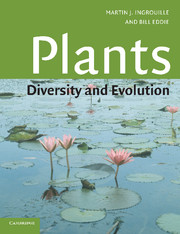Book contents
Preface
Published online by Cambridge University Press: 05 June 2012
Summary
Dancing is surely the most basic and relevant of all forms of expression. Nothing else can so effectively give outward form to an inner experience. Poetry and music exist in time. Painting and architecture are a part of space. But only the dance lives at once in both space and time. In it the creator and the thing created, the artist and the expression, are one. Each participant is completely in the other. There could be no better metaphor for an understanding of the … cosmos.
Lyall Watson (Gifts of Unknown Things)The metaphor of dance is a very apt way to portray the unfolding and increasing complexity of plant-life on Earth. The dance of plants is the dance of plant form in space and time. From a reductionist point of view, the conversion of solar energy is what plants are really all about, either at the level of the individual, or the community, or even in the characteristics of the plant-life of a given region. Form, is the physical expression of the energy captured and transformed by plants, and it provides the basis for all ecological relationships. It is not surprising then that, broadly speaking, the plants of tropical regions that have access to the greatest input of radiant energy also have the greatest exuberance, while those of energy- and nutrient-limited environments, such as alpine moorlands and bogs, have a more restricted range of body plans.
- Type
- Chapter
- Information
- PlantsDiversity and Evolution, pp. vii - xviPublisher: Cambridge University PressPrint publication year: 2006



